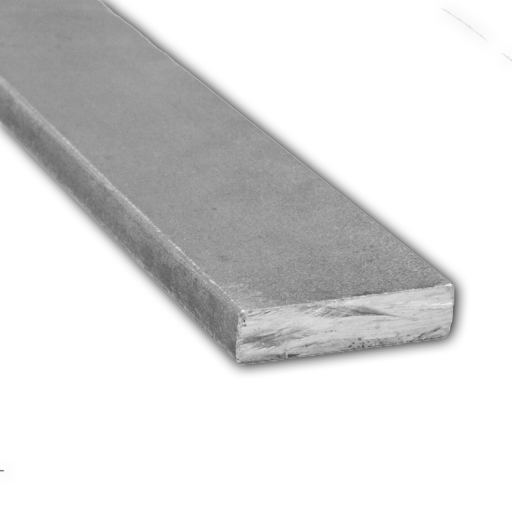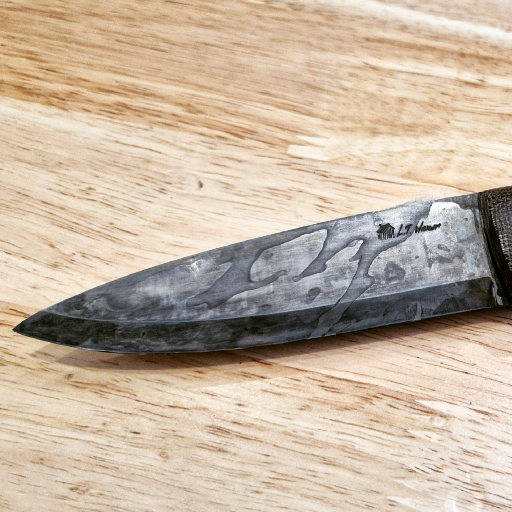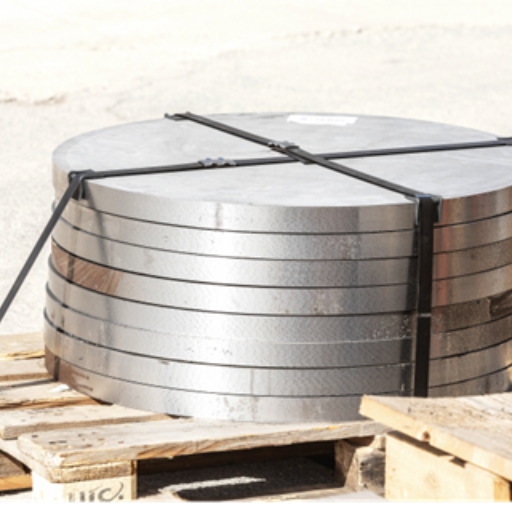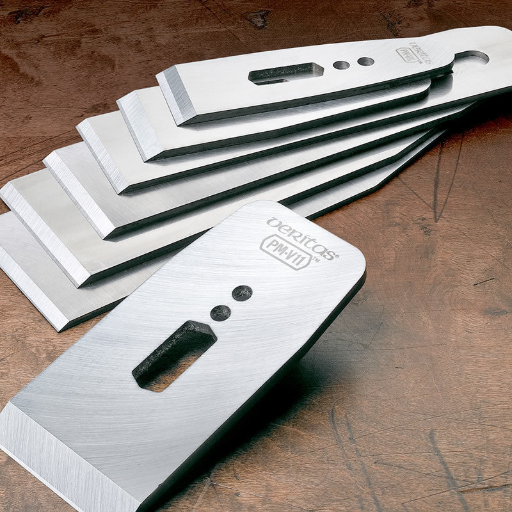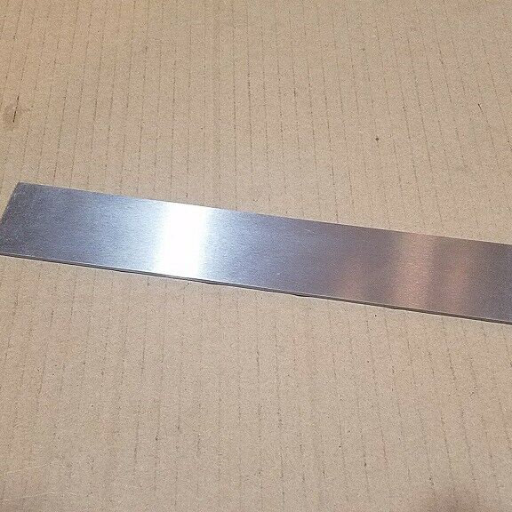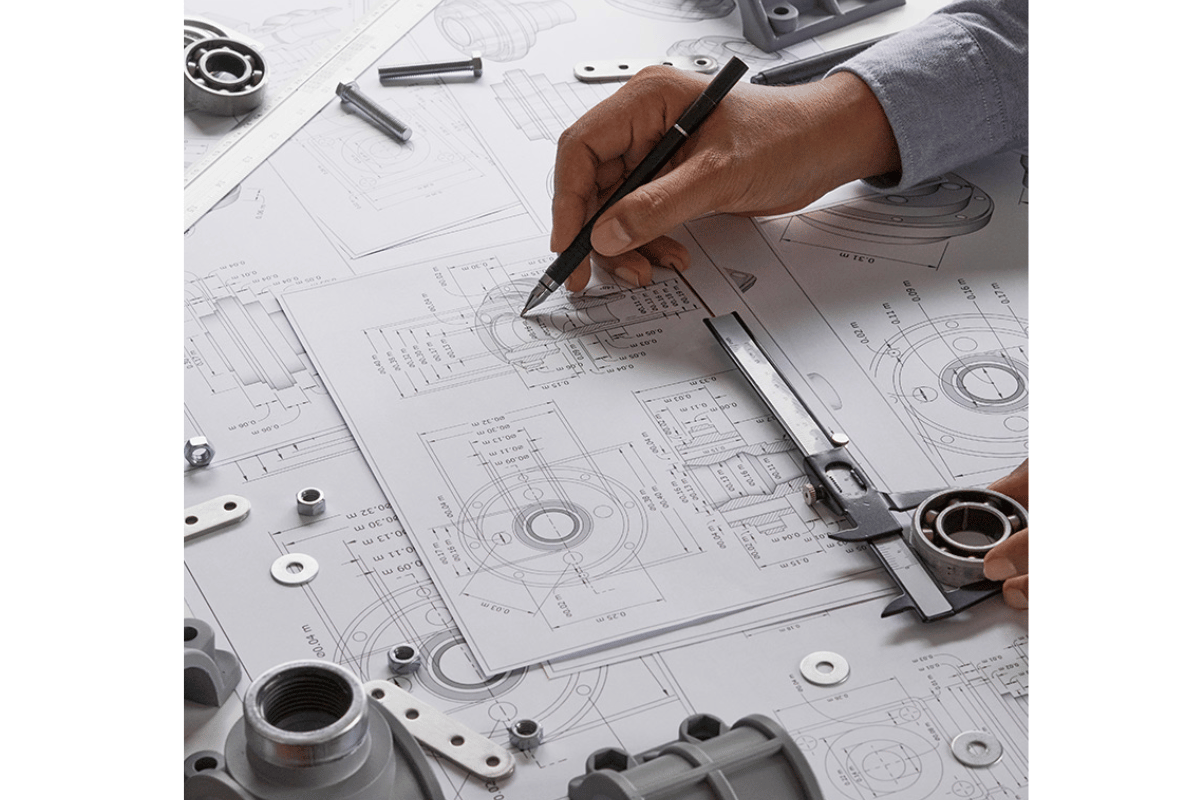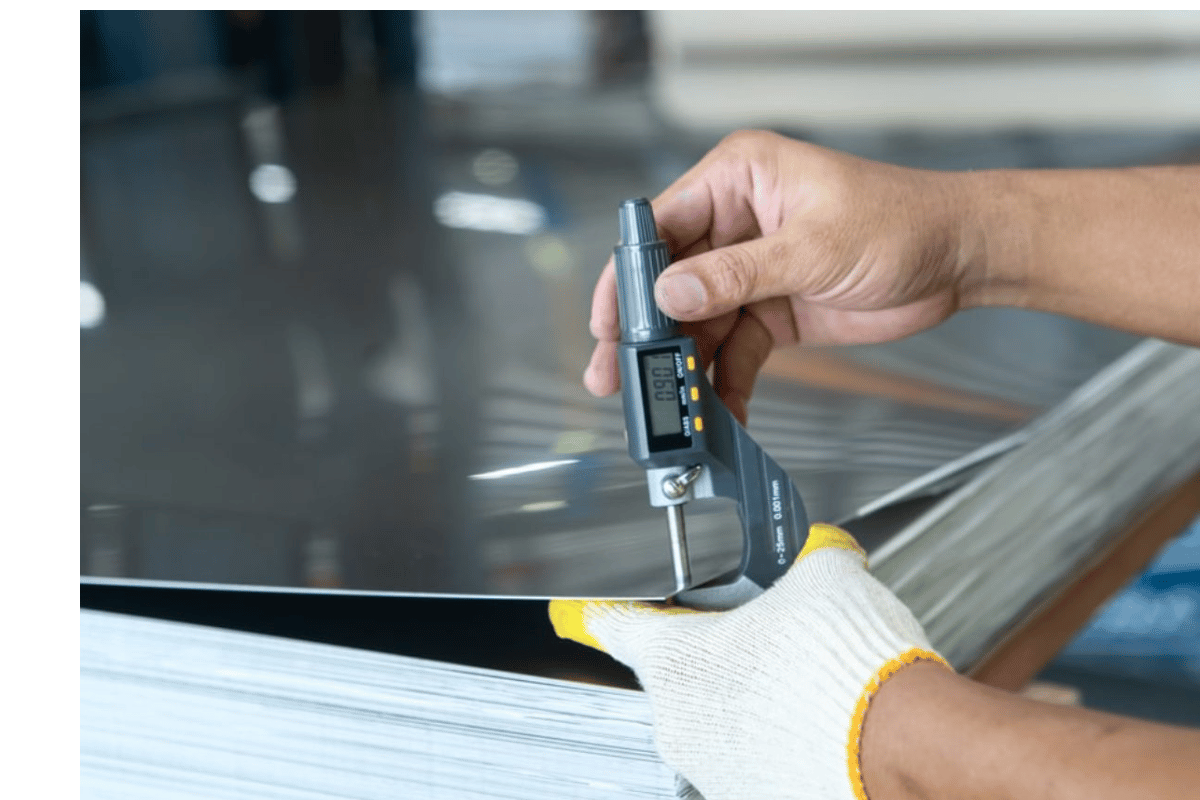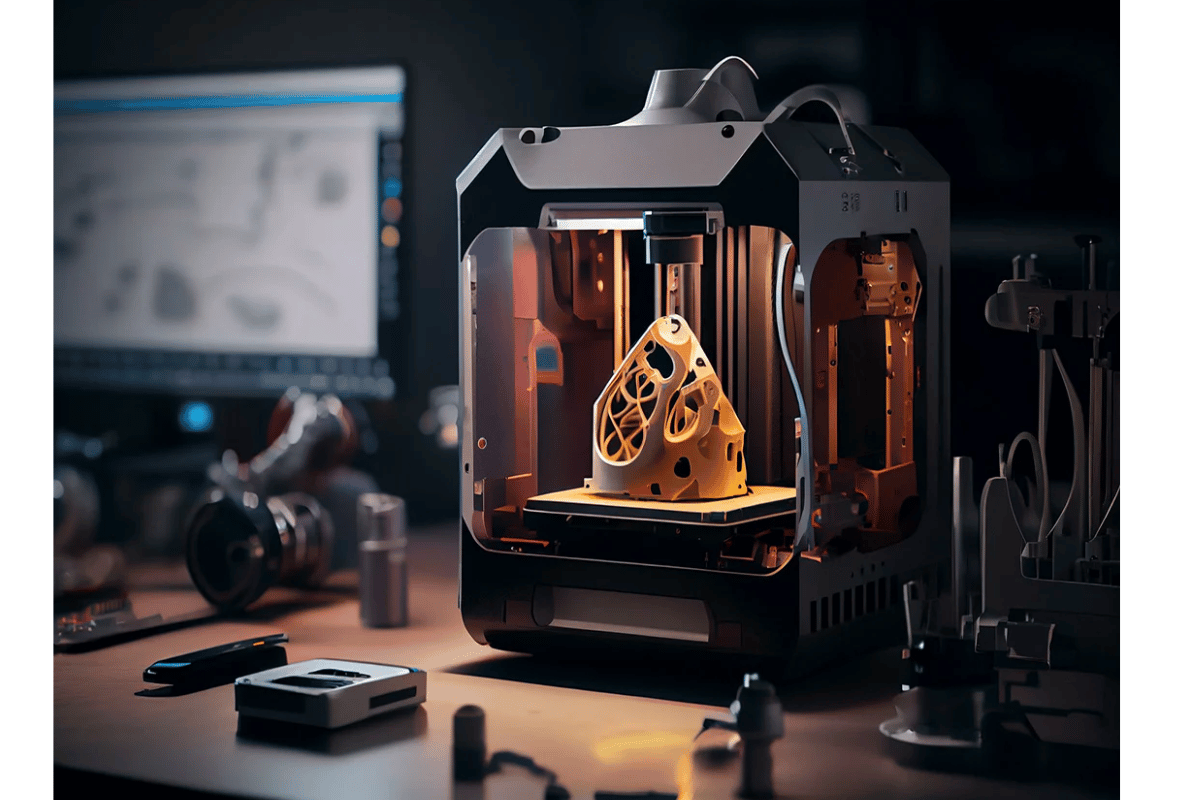Welcome to this final guide on O1 steel intended specifically for tool makers. If you know a lot about handworks or still are at the beginning, understanding the details of O1 steel will tremendously improve your tools quality and performance. This manual does not only aim at understanding o1 steel but also intends to explain its secrets in relation to its unique properties, merits, and best practices related to it as a high carbon tool steel. Starting from process of heat treatment to sharpening there isn’t an aspect that we shall miss in order to create durable instruments which can last for generations. Come with us as we explore through the world of O1 steel so that you come out being a better craftsman today than yesterday.
What is O1 Steel and Why is it a Preferred Tool Steel?
Understanding the Chemical Composition of O1 Steel
O1 steel, sometimes called oil-hardening steel, has a unique chemical structure that makes it applicable in many tool making industries. From my own experience, the major elements making up the composition include carbon, manganese, chromium, tungsten, vanadium and silicon. After heat treatment, these combine to form a material with excellent hardness and wear resistance. The presence of about 0.90% carbon in the alloy is however significant in improving its ability to achieve very high levels of hardness. In my opinion, I’ve noticed that addition of small amounts of chromium and tungsten contribute greatly to edge retention and general toughness of this steel which consequently make reliable long-lasting tools possible. This well-proportioned mixture ensures that O1 steel is still synonymous with people dealing in tool making like me.
Comparing O1 Steel to Other Tool Steels
By comparing O1 steel with other tool steels, tool makers can make several essential distinctions. To begin with, the oil hardening feature of 02 steel differentiates it from air hardening steels like A2 or D2 which use different modes of quenching to result in varying hardness and wear resistance profiles. When subjected to oil-quenching, O1 attains greater hardness which makes it suitable for tools that must retain sharp edges and be highly durable. Conversely, because it is an air hardenable type of steel, A2 offers better dimensional stability and less distortion during heat treatments.
The composition of o1 steel has high carbon content that leads to superior edge retention while a-2 and d-2 steels have more chromium thus enhanced their corrosion resistance and wear performance. More specifically, d-2 has a high chromium content thereby making it semi-stainless with excellent wear resistance as well as toughness hence ideal for cutting tools which encounter significant abrasive forces. However every variant has its own strengths and specific applications; yet still o-1 remains favorite amongst others due to the balance between hardness, the ease with which sharpening can be performed on it plus overall versatility in tool making.
Advantages of Using O1 Steel in Tool Making
As a toolmaker who has had experience working with various types of steel including O1 steel I would like to point out that there are numerous reasons why one should consider using this type of material when producing high quality tools. First among them is the fact that oil-quenching facilitates very high hardness levels resulting in extremely sharp blades which remain so even after long periods of usage. This combination of properties means that the objects I create will continue to function efficiently and dependably under tough conditions characterized by demanding environments where nothing but top-notch reliability is acceptable anymore. Moreover, some other types of high-carbon steels such as O1 steel can be sharpened easily enabling tools made from it to remain functional throughout their lifetime.
Additionally, o1 steel is a good balance of toughness and wear resistance due to its carbon content being high while alloying elements are relatively moderate. It helps in making tools that can resist both the impact and abrasion that often takes place in various industrial environments. As a result, I find that even though this material does not have equivalent corrosion resistance like D2 which contains more chromium, proper maintenance and care for such instruments made out of O1 still adequately address this particular apprehension.
Ultimately, O1 steel’s flexibility and dependable performance make it an indispensable material in my workshop. Moreover, when fabricating it is easy to work with compared to other materials and during heat treatment it behaves predictably – all these ensure it remains a preferred steel for creating long-lasting tools with high-performance capabilities at all times.
How to Heat Treat O1 Tool Steel for Maximum Hardness
The Step-by-Step Process of Heat Treating O1 Steel
Preparation:
- Cleaning: Before heat treating, it is important to make sure that the O1 steel does not have any impurities such as oil, rust or soil. These can easily interfere with the process of heat-treating.
- Pre-heat: This will reduce thermal shock during main heating stage by slowly heating up of the steel at temperatures of approximately 1200°F (650°C).
Austenitizing process:
- Heat to Austenitizing Temperature: The critical temperature for O1 steel is usually between 1450°F and 1500°F(790°C and 815°C) where it should be heated.
- Soak Time : Another way to attain full austenite would be to hold the steel at this temperature of about 30 minutes per inch thickness.
Quenching:
- Rapid Cooling:The next step in the process is a quick drop into oil which rapidly cools down the O1 steel. In this case, martensite and retained austenite are formed when hardening takes place.
- Agitation: Keep stirring gently while allowing it to cool down slowly in the oil so that consistent cooling may take place throughout its entire volume.
Tempering:
- Reheating: After quenching, reheat the metal to a tool maker’s temper which ranges between 300°F – 450°F (150°C – 230°C).
- Hold Time: For two hours let O1 soak at this tempering temperature relieving internal stress and obtaining necessary hardness level.
- Cooling: Finally, bring slowly down until it reaches room temperature.
Thus following these steps will enable you acquire maximum hardness in your o1 tool steels thus enabling them perform effectively.
Why is O1 Steel Hardening by Quenching in Oil Essential?
From my experience, quenching O1 steel in oil is essential for several reasons. Firstly, it helps to achieve a controlled and uniform cooling rate necessary for the development of martensitic structure without introduction of excessive stress or distortion. This uniform cooling ensures that the required hardness and strength are met in high-performance tools. Furthermore, oil as a medium reduces the likelihood of cracking during quenching when compared to water or air due to its less severe quenching characteristics. The turbulence of quenching breaks up any vapor film around the steel that could otherwise provide an insulating effect on the steel leading to more consistent results. Consequently, I have been able to create trusted tools withstanding rigorous applications through oil quenching.
Tempering O1 Steel: Striking the Right Balance between Hardness and Toughness
Given my expertise on this matter, tempering O1 steel means achieving hardness against toughess such that it remains reliable in operation. I discovered through experience that reheating this material at slightly lower temperatures after engaging it in rapid cooling is critical. By keeping the temperature within a tempering range of 300°F to 450°F (150°C to 230°C) for approximately two hours, it becomes possible for me to release internal stresses while imparting desired level of hardness. Proper control over this procedure allows fine-tuning mechanical characteristics so that the material does not get too brittle while still keeping its sharp edge intact. To complete this process, it needs be cooled naturally down to room temperatures which makes sure that product does not only become hard but also withstands major strain without chipping or breaking off at an ordinary pace; this is exactly what professional tool makers aim at when manufacturing instruments meant for complex operations requiring very high precision cuts such as surgical procedures done by surgeons using modern technology equipment including robotic surgeries thus enabling me build quality reliable tools tailored to their intended uses.
The Role of Carbon Steel in Enhancing the Properties of O1 Steel
How Carbon Content Influences the Hardness of O1 Tool Steel
Hardness of the O1 tool steel can be attributed to the level of carbon it contains. High carbon content in O1 steel facilitates hardening when heat treated. At its austenitizing temperature, I heat it up and dissolve the carbon atoms into iron matrix forming a solution that changes into martensite during quenching. This is an extremely hard and wear resistant martensitic structure which is crucial for tools. Another property of this material is that carbides are formed due to the presence of carbon as it cools which makes them harder and more efficient during cutting processes. Thus, by controlling carefully levels of carbon as well as heat treating steps, I produce tools with desired hardness qualities alongside extreme durability and usability properties.
O1 Tool Steel vs. High Carbon Steel: A Comparative Analysis
While comparing O1 tool steel to High carbon steel, it is vital to consider several important factors that impact their performance and appropriateness for different applications. The following are the parameters in details:
- Carbon Content: O1 tool steel has a specific carbon content range (approximately 0.9-1.0%) which allows high hardness when heat-treated. On the other hand, high carbon steel may have varied carbon contents (ranging from 0.6%–2.0%) which affect its hardness and brittleness. In general, higher percentage of carbon increases hardness but also makes the metal brittle.
- Hardness and Wear Resistance: Both O1 tool steel and high-carbon steels are known for their hardness as well as wear resistance while O1 tool steels are specifically engineered for making tools with a fine balance of both qualities. High-carbon steels can reach higher values of hardness but lose on toughness hence they become more prone to chipping or fracturing under load.
- Heat Treatment: O1 Tool Steel needs precise heat treatment to optimize its properties; this involves austenitizing, quenching and tempering processes. However, high-carbon steels also need heat treatment only that precision levels may vary depending on the application. Proper heat treatment not only ensures uniform martensitic structure but also results in desired uniformity in hardness and toughness of 01tool-steels.
- Toughness: It is made robust enough to strike a balance between toughness and hardness that characterize most tools subjected to impacts or stresses. If not properly tempered, high-carbon steels can be hard but less tough leading to cracks or failure during heavy duty use.
- Machinability: When compared with some high-carbon steels, like those mentioned earlier, O1 tool steel is relatively easy-to-machine resulting in fine detail work and precision for making tools . The increased level of hardness among high-carbon steels makes them difficult to machine, wearing out tools faster.
- Applications: O1 steel is used for knife-making, cutting tools and other implements requiring a sharp edge as well as dependability. Conversely, high carbon steel is versatile but is often seen in cases where extreme hardness is needed such as blades, springs and high tensile wires.
These parameters help one make an informed decision on whether O1 tool-steel or High Carbon Steel would best suit a given application since the correct balance of hardness, toughness and usability is achieved.
Knife Making with O1 Steel: Tips and Techniques for Beginners
How to Choose the Correct O1 Steel for your Knife Project
When I have to select the appropriate O1 steel for my knife project, I start by thinking about what kind of knife I want to make. For instance, if my focus is on producing an ultra-sharp chef’s knife with a very thin edge, then I would opt for high carbon content O1 steel that provides better sharpness and holding of its edge. The thickness and width of steel are also considered in comparison with my design requirements. Besides, correcting the quality and uniformity of the supplier source materials are also important considerations that affect significantly the performance of the final product. Lastly, I take into account my heat treatment set up as it should be capable to support specific O1 steel demands associated with tempering together with attaining required hardness levels needed in making strong and durable blades.
Must-have Tools When Working with O1 Steel
When working with 01 steel, there are some must-have tools and equipment which cannot be left behind. First of all, a reliable belt grinder is priceless when you want to shape a blade or achieve fine finishing on it. In addition, I normally use different grits of sandpapers or grinding stones so that I can give the blade an ultimate finish. For this reason a hacksaw or metal cutting band saw becomes paramount since through it one can cut his/her desired shapes out from metals.
Secondly, detailed work such as refining blade’s profile and tending to tangs requires a good set of files. Propane forge or heat-treating furnace are used during heat treatment hence allowing me to provide sufficient temperatures necessary for hardening o1 steel respectively. Quenching oil specifically made for o1 steel should never miss during proper heat treatment.
Lastly any forging work needs a strong anvil among other things; while gloves safety glasses respirator will always protect me throughout the process.I feel well-equipped to create high-quality knives from O1 steel with these tools.
How To Achieve Precision Ground Edges On Your Knife: The Final Steps.
My knife’s precision ground edges are achieved through a series of meticulous steps. I start by using a belt grinder with a rough-grit belt to shape the edge in the first place. This enables me make a primary bevel and see to it that the blade is symmetrical on both sides. Once I have achieved this rough form, I transition to grit belts of increasing fineness, which will eventually narrow down the blade and eliminate all deep scratches. As I move across different grinds, I closely watch my angles so that the edge won’t change.
After grinding, more sharpening needs to be done using fine grit stones or diamond hones. By going through multiple levels of coarsenesness throughout increasingly finer grits, I am able to produce smooth finishes with razor sharpness edges. It takes patience and steady hands to go through this process; however it is quite important if one wants their tool to attain desired sharpness plus accuracy limit. In this case, I always use honing guides so as not to alter symmetry when changing an angle while stropping.
Finishing touches involve polishing an edge with a leather strop loaded with polish compound. Stropping eliminates any micro-burrs and leaves the edge mirror-like sharp.This is the final step for sharpening as well as enhancing visual appeal of a knife.It only remains for me to carefully follow these few but deliberate steps in order to achieve a precision ground edge that will remain sharp over time making sure that my knife remains at its best.
Where to Buy O1 Steel and What to Look for in a Supplier
Identifying Reliable Suppliers of O1 Tool Steel
As a result, I seek to purchase O1 tool steel from those suppliers who have proved to be outstanding. This involves the first step of my research which includes reading feedbacks by other knife makers and tool users who bought from these suppliers. Such reviews make it possible for me to identify firms that are known for delivering quality steel.
Moreover, the supplier’s technical specifications and certifications are appraised. For my knife making activities, it is crucial that the O1 steel meets industry standards and is precision-ground to stated tolerances in order to ensure optimum performance. A dependable supplier will provide material certifications with full details as well as openness on their production methods.
Moreover, customer service and support matter in my decision-making process. A reliable supplier will be reachable through various means and willing to assist you in choosing the right type of steel.
Ultimately, I would compare prices and shipping options available before settling on one option. Although price is important, quality should never be compromised. Good vendors usually offer reasonable rates but the stress should be laid on how well it maintains uniformity contained within the material.
By following this list of guidelines I am able to determine manufacturers of high-quality O1 tool steel that satisfy all my strict requests.
Understanding Grades and Specifications When Purchasing O1 Steel
There is no doubt that for my knife making projects, knowing the different grades and specifications is important when buying O1 tool steel. O1 steel grade controls its toughness, hardness and holds the edge, hence choosing a right one depends on these factors. I never miss going through technical specifications of suppliers such as chemical composition and heat treatment in order to meet my expectations.
I always have to first consider the carbon content before purchasing it because it affects its hardness and wear resistance. Besides this, I keenly evaluate whether there are other elements such as chromium and manganese in it which affect its toughness and ability to resist impact. This information is usually contained in data sheets that come with the material.
Similarly, just like what they say about steel’s ability to be hardened by tempering based on heat treatment specification, you cannot ignore the importance of understanding how well the steel can be tempered to achieve a desired hardness. In my search for suppliers who provide a rich catalog of their heat treatment processes following strict industry guidelines; it is necessary that I find them. For instance, properly heat-treated O1 steels will have consistent grain structures as an integral part of their knives’ general durability and performance.
Through understanding these grades and specifications therefore, I am able to make better choices whenever I go buying O1 steel so that it falls in line with my excellent standards of quality or performance expected from anything that I procure. That criteria becomes critical if one wants to create knives which serve for long periods while still being functional at all times too.
Reference sources
1. Online Article: “O1 Tool Steel: Properties, Applications, and Heat Treatment” – AZoM
- Source: AZoM
- Summary/Annotation: This article from AZoM provides an in-depth overview of O1 tool steel, discussing its chemical composition, mechanical properties, and common applications. It covers the key attributes of O1 steel, such as its high hardness, excellent wear resistance, and good machinability. The article also details the heat treatment process required to achieve optimal performance for various tool-making applications. AZoM is a reputable resource for materials science information, ensuring the content is accurate and well-researched. This source is valuable for readers seeking a foundational understanding of O1 tool steel and its practical uses in manufacturing cutting tools, dies, and gauges.
2. Academic Journal: “Microstructure and Mechanical Properties of O1 Tool Steel” – Materials Science and Engineering: A
- Source: Materials Science and Engineering: A
- Summary/Annotation: This peer-reviewed paper published in the journal Materials Science and Engineering: A explores the microstructure and mechanical properties of O1 tool steel. The study includes experimental data on the effects of different heat treatment cycles on the hardness, toughness, and wear resistance of O1 steel. It also provides insights into the microstructural changes that occur during heat treatment and how they influence the steel’s performance in various tooling applications. As an academic journal, this source offers high credibility and technical depth, making it essential for readers interested in a rigorous scientific understanding of the material properties and performance characteristics of O1 tool steel.
3. Manufacturer Website: “O1 Tool Steel: Technical Data and Applications” – Bohler-Uddeholm
- Source: Bohler-Uddeholm
- Summary/Annotation: Bohler-Uddeholm’s website provides comprehensive information about O1 tool steel, including technical data sheets, chemical composition, and typical applications. The site features detailed descriptions of the properties of O1 steel, such as its high dimensional stability and ease of heat treatment. It also offers guidance on machining, annealing, and tempering processes. Bohler-Uddeholm is a leading manufacturer of high-performance tool steels, ensuring authoritative and practical insights. This source is crucial for tool makers and engineers seeking reliable information on the capabilities and best practices for using O1 tool steel in their projects.
Frequently Asked Questions (FAQs)
Q: What is O1 steel and what is its primary use in the production of knives?
A: For those who make knives, O1 steel is a high carbon, oil-hardening tool steel which has an outstanding ability to retain sharpness and can be honed to razor edge. It has relatively low alloy content resulting in good choice for fine cutting tools while dies made from 01 offer better wear resistance.
Q: How does O1 compare with other knife steels like A2 or D2?
A: O1 steel offers a good combination of toughness, hardness and wear resistance when compared to A2 or D2. This means it may not offer as much protection against corrosion as D2 because it has less chromium but it can achieve finer edges. Also A2 is tougher than 01 but probably does not hold an edge that long. When compared with 01, both A2 and D2 are more difficult to sharpen.
Q: Can O1 be used in other tools besides knifemaking?
A: Of course, this versatile kind of tool steel referred to as non-deforming tool steel having excellent wear resistance is used outside knife manufacturing for creation of different kinds of tools and dies like stamping tools, gauges and slitting cutters. It’s best suited for complex shapes requiring stringent tolerances due to its property as a “non-deforming” tool steel with highwearresistance.
Q: How do you heat treat 01 Steel?
A: Usually the process comprises heating above the critical temperature followed by quenching into oil, in order harden the material after which tempering at lower temperature would give desired hardness/toughness balance. Proper annealing before heat treatment will improve its structure hence enhancing die steel performance or knife steel performance.
Q:Is there any other difference between O1 steel and high-speed steels such as O2?
A:Yes, there are. They consider O1 steel to be an oil-hardening, non-shrinking tool steel that is characterized by excellent resistance to wear mostly used in applications calling for sharp cutting edges and long life time. On the contrary, high speed steels like O2 are meant for use in environments where they are expected to resist wear at elevated temperatures offering higher hardness but lesser toughness compared with O1. It all comes down to their alloy compositions and heat treatment methods: knives and fine instruments are best created from O1 whereas high speed cutting tools suit better if made of O2.
Q:What does Rockwell hardness (HRC) have to do with the performance of an O1 steel knife?
A:Rockwell Hardness (HRC) is the hardness of a steel which refers in turn to its potential durability or wear resistance. It is essential that one achieves the right HRC when making knives from O1 tool steel through heat treatment for them to perform optimally. A higher HRC means better edge retention/wear resistance but also makes a steel brittle while very high can cause damage on it. Generally speaking though, an ideal HRC for an O1 knife lies between 57-62 since it balances well between two extremes – hardness and toughness.
Q:Why do flat ground blades work well with knives made from O1steel?
A:The advantage of flat-ground blade which runs from back spine straight down onto cutting edge makes it suitable for knives manufactured from this material because it combines inherent qualities of sharpness and durability with improved slicing efficiency of the metal involved. This common grind allows thinner edges due to combination with precise hardening properties inherent within this type of material leading into better cutting performance.



